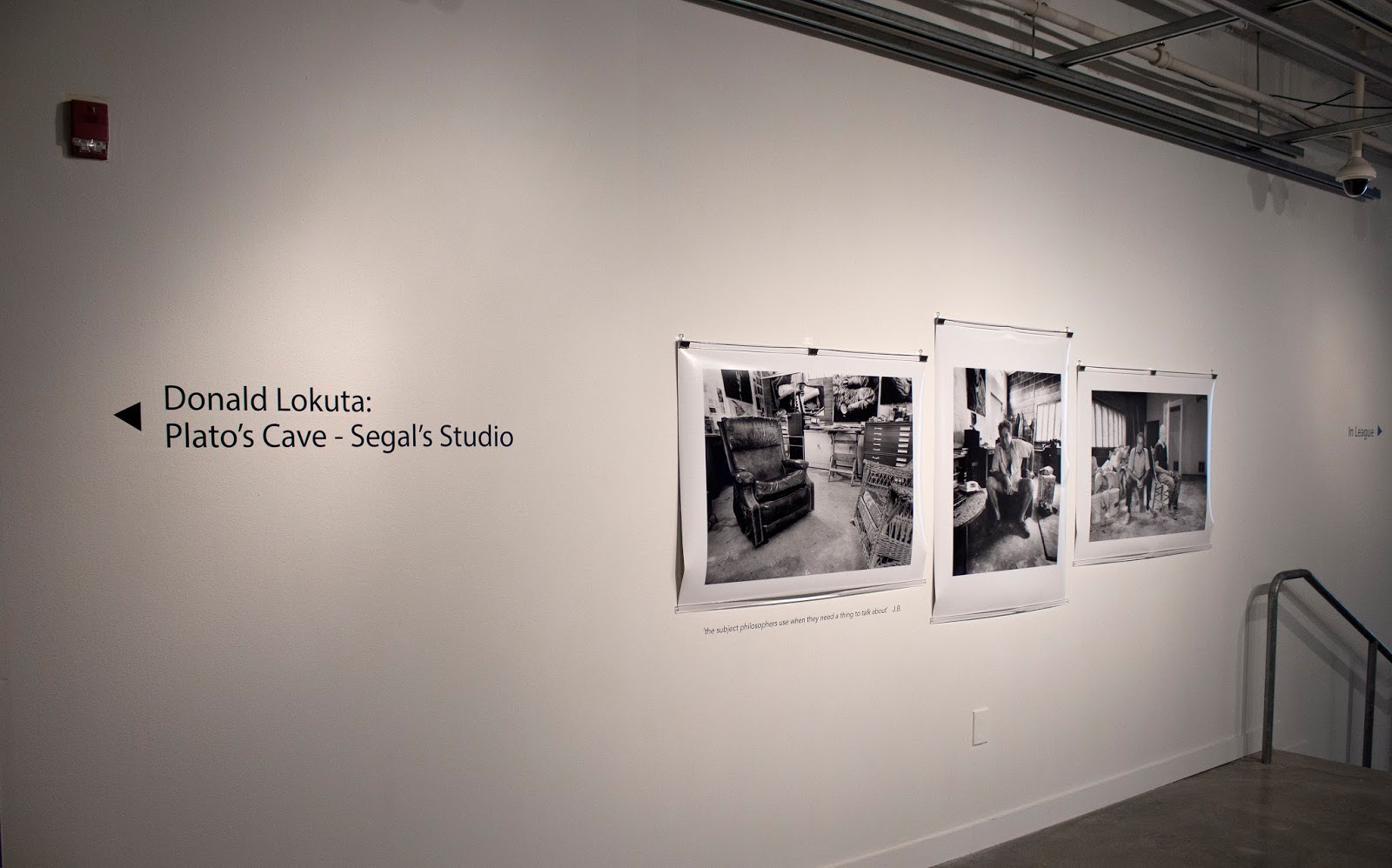While I am not there to see them for myself, I am proud to report that George Segal’s sculpture Circus Acrobats (1988) have now been installed in the Ohio Union at Ohio State University.
Thanks to this generous gift to the university from The George and Helen Segal Foundation, generations of OSU students can now marvel at this dramatic duo swinging from the rafters as they look up in the expansive main hall of the Union. In response to the sculpture’s installation, I was asked by Noah Toumert, a student journalist for the OSU newspaper The Lantern to tell him about how the gift of the sculpture came about, the role of OSU alumnus and photographer Donald Lokuta and the impact of the work on OSU students.
You can read Noah’s article here, which includes some student eye-witness accounts of seeing the acrobats in action. However, for obvious reasons, Noah was not able to include the full report I sent to him, so I wanted to share it for you here, with some links and pictures:
Noah Toumert The Lantern: I understand that the connection between the university and the George and Helen Segal Foundation came from Donald Lokuta’s art exhibition at Ohio State. Does Lokuta have any connection to the university and how did that relationship begin?
I am an Associate Professor in the Department of Classics at OSU and although my main area of research is in how the ancient Romans inherited, appropriated and transformed Greek philosophy, I also have a research and teaching interest in the connections between Classics and Contemporary Art. I stumbled across an advertisement for an exhibition called
In Plato’s Cave redux: Photographs by DonaldLokuta, at the hpgrp gallery, New York in an issue of
Aperture magazine.
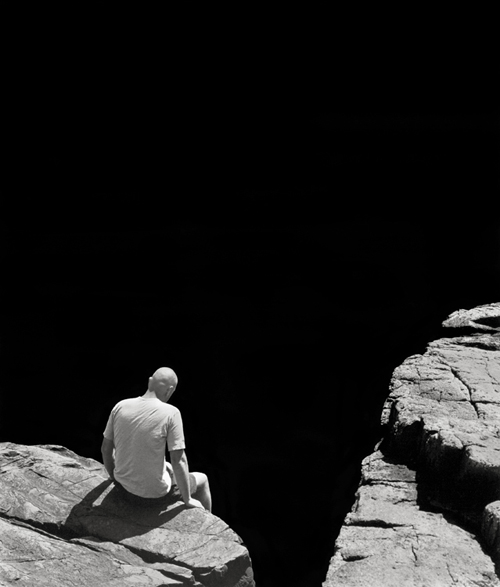
I contacted the gallery asking them about the exhibition and accompanying catalogue, then I received an email from Donald saying that he was delighted in my interest in the exhibition, not only as a professor who works on ancient philosophy, but also because he was actually an alumnus of OSU. In fact, after receiving his PhD in 1975, he taught in the old Department of Photography and Cinema in the now demolished Haskett Hall, before taking a job at Kean University in his native New Jersey, where he has taught ever since. The serendipity of our connection was not lost on me and I immediately invited Donald to come to Columbus to talk to a class I was teaching in the Fall of 2012 about the connections between
Classical Mythology and Contemporary Art. He agreed and everything was planned, but then Hurricane Sandy hit New Jersey the week he was due to come and so we had to postpone.
In the conversations that followed, we talked about the possibility of the exhibition – one that would combine his work based on Plato’s Analogy of the Cave in his Republic with the series of photographs he took of his friend, the well-known sculptor George Segal, in his New Jersey studio. Lokuta’s photographs of Segal’s studio are all the more interesting for the fact that Lokuta used to model for Segal (you can see him in the FDR memorial Depression Bread Line – the tallest figure in the middle) and also help create the cast when Segal himself was the subject (he’s also in the breadline, behind Lokuta).

Furthermore Segal was also a keen photographer and he and Donald would go to New York and take photos of the city together. All of these aspects of the Segal’s Studio series were important for me because they resonated with the key ideas of Plato’s Cave – levels of reality, figures inside and outside the cave and ideas of art and representation. So, with the support of the Urban Arts Space and the Arts Initiative, I put together the exhibition, which included his photographs of the Studio and projections of the Cave, as well as a generous loan of a Segal sculpture from the Columbus Museum of Art (I have Valarie Williams at the Arts Initiative to thank for engineering this loan).
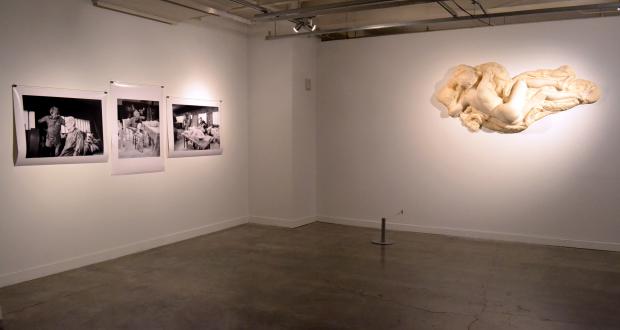
The opening of the exhibition included a series of talks with Lokuta, both at the UAS and the Wexner Center, and also an amazing dance called
Out of Cast and Cave that I commissioned to be choreographed by OSU Dance Dept. alumna Leigh Lotocki, performed by Lotocki and Amanda Platt (also an OSU Dance alumna) and with music by OSU Music School DMA candidates Kevin Estes and Johnny Mendoza (
Plato’s Cave by Casey Cangelosi, originally commissioned by OSU graduate Maria Finkelmeier). In many ways the dance was one of the highlights of the exhibition – Donald felt so as well – and I think it is one of the reasons behind why the gift of the Circus Acrobats is so fitting!

As you can tell, there is lots to say about the origins of the exhibition etc, but I think the most important thing is that it was a collaboration that included so many different generations of OSU students and teachers – a PhD student from 1975, who taught at OSU, a current Classics Professor, recent Dance students and (then) current Music students and one alumnus. I guess I would love it if some of this back-story made it into the account of the gift of the Circus Acrobats, as it puts them in context of this multifaceted exhibition.
Noah Toumert The Lantern: When did the residual contact between the foundation and the university take place? Did they offer the piece or was it asked for?
Richard Fletcher: Following the success of the exhibition, I received an email from Susan Kutliroff at The George and Helen Segal Foundation in November 2013, stating that she had ‘recently been speaking with Donald Lokuta about the show he had at The Ohio State University. He was very positive and in the course of the discussion the idea of gifting a Segal work to the University came up. We would like very much to do this. Donald suggested I contact you to ask if you thought the University would be interested and, if so, how to facilitate this. My thought was that you might be interested in The Acrobats.’

As you can see from this, the gift of the Circus Acrobats was a direct result of Lokuta’s relationship with Segal and the Foundation and, as an alumnus of OSU, his suggestion that the Foundation consider gifting a sculpture to the museum. The idea of the Circus Acrobats came from the fact that it was a major work – a bronze – and one that really accentuated the dance performance at the opening that Donald so enjoyed.
Then, with the support and encouragement of my department chair Ben Acosta-Hughes, I went through the University’s Arts and Memorials Committee and, with the help, collaboration and guiding support of the co-chair of the committee at the time – Prof. Michael Mercil of the Dept. of Art – Deans Mark Shanda and Valarie Williams, the latter as Director of the Arts Initiative – the gift was accepted. I was especially appreciative of the help of Michael Mercil because of his expertise in the field of 20th century art helped when we wrote together a letter to the rest of the committee explaining the unique nature of the Segal sculpture.
Noah Toumert The Lantern: What meaning did Segal or the foundation put behind the piece?
Richard Fletcher: The Circus Acrobats was a major work by Segal and one of the few large bronze sculptures left at the Foundation after several years of gifts. Among Segal’s sculptures, Circus Acrobats represented a very important aspect of his work, as an example of when he would cast figures and create environments that actively celebrate the dramatic potential of the human form. Art historian William Seitz has described these as ‘the arts of bodily expression – dancing, acrobats.’ And if, in fact, there is one subject that remained constant throughout Segal’s long career, it is the enduring and compelling figure of the circus performer. Segal first created Circus Girl in 1967, Girl on flying trapeze in 1969, Trapeze in 1971 and Tightrope walker in 1973. He returned to the theme with Circus Flyers in 1981 and Circus Acrobats in 1988, ending with Red Woman Acrobat in 1996.
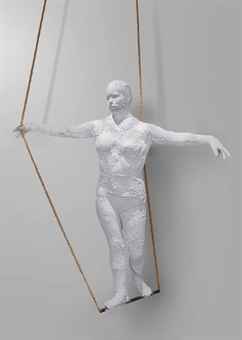
Donna Gustafson, who has also curated an exhibition of Lokuta’s photographs at the Zimmerli Museum, Rutgers, writes that, ‘Segal’s circus performers bring the circus back from the outer limits of human experience and returns to the metaphor of circus activity as life’s activity.’ So, the Circus Acrobats belongs to an important and inspiring theme in Segal’s art in general and in Post-war Modern art in general. For all of Segal’s ‘realism’ it was his selective choice of subjects—combined with his uncanny use of abstract elements within the figurative form—that give his work its unique position in the development of the art of the 1960s and beyond. Writing about his work in 1965, Marcel Duchamp observed that: ‘with Segal it’s not a matter of the found object; it’s the chosen object.’ Duchamp’s telling appraisal not only situates Segal’s work within other art movements of the time (e.g. Minimalism, Conceptual Art) but further suggests how choice is central to its significance.
Noah Toumert The Lantern: What was the university’s reasoning for placing it in the Union and so high up?
Richard Fletcher: There were several options for the placement of the sculpture on campus that the Arts and Memorials Committee discussed (I was not a member of the committee, so I only heard about their discussions 2nd hand through Michael Mercil). One of them, which in many ways was my personal preference, was the Oval-side foyer of the Thompson Library. I loved the idea of seeing the acrobats soaring above students as they studied, lifting them through their exams with a dramatic sight! However, the library administration were not convinced of the appropriateness of the sculpture in their space, and the committee had to look elsewhere. In many ways, given the humanist nature of Segal’s work, the most important thing was for students to encounter the sculpture in their daily lives and activities on campus, so the Union was a great choice. As for why it is so high (I have not seen it in person, only from photographs) this is a question for the installation team. However, one reason could be the cramped and limited space of the installation of the same sculpture series in the Princeton University Art Museum. Rather than restrain the acrobats, it is better to see them fly – and having them up high would have that effect.
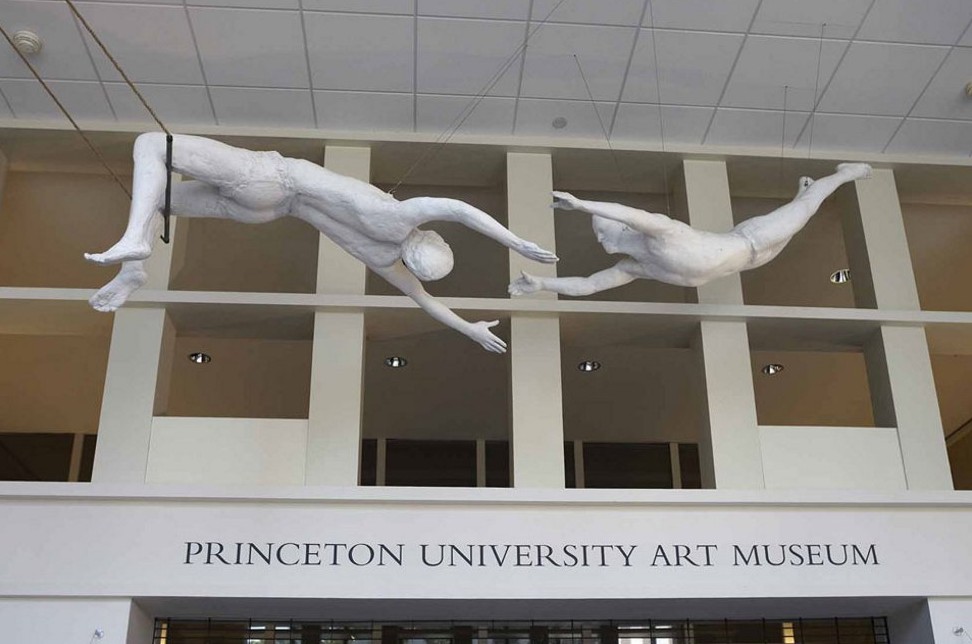
Noah Toumert The Lantern: In your opinion, what does this mean for the university? What does it show about us?
Richard Fletcher: This is a major gift to the university, not only because it is a key work of art by one of the greatest American sculptors of the twentieth century, but also because its story involves so many OSU people, especially that of alumnus Donald Lokuta. While less dramatic than the sculpture, Lokuta gifted photographs from the UAS exhibition to the OSU Libraries and is a major photographer in his own right. His story is an inspiration to students in Art and Photography and is testament to the nature of a friendship that lasted for 20 years between a photographer and sculptor. The gift shows that OSU can create personal connections between generations of students and teachers and it is this point that I want to emphasize. Yes, it is a beautiful, impressive work, soaring through the Union, but I think that the story behind it is equally uplifting and important for OSU students. I really hope that the University administration do something to acknowledge Lokuta’s role in all of this, whether a plaque or an event of some kind. It is ultimately thanks to him that this has happened.

Noah Toumert The Lantern: Is there anything else you’d like to say or you’d like students from the university to know about the sculpture?
Richard Fletcher: I want students to know that this is a pivotal work in the career of a major artist and for twentieth century art in general. Furthermore, I think that its dramatic embodiment of two flying acrobats, grasping at each other through the air, is there to inspire the whole OSU community as an expression of a truly aspirational humanism. Finally, the modest story of this dramatic sculpture is one of intimate friendship, between Segal and Lokuta, and the developing friendship between an OSU Classics professor and an alumnus photographer. It is also a reminder of the exhibition that brought together current and former students across the arts and humanities to think about collaboration, creativity and the human power of art to inspire new generations of OSU students.


